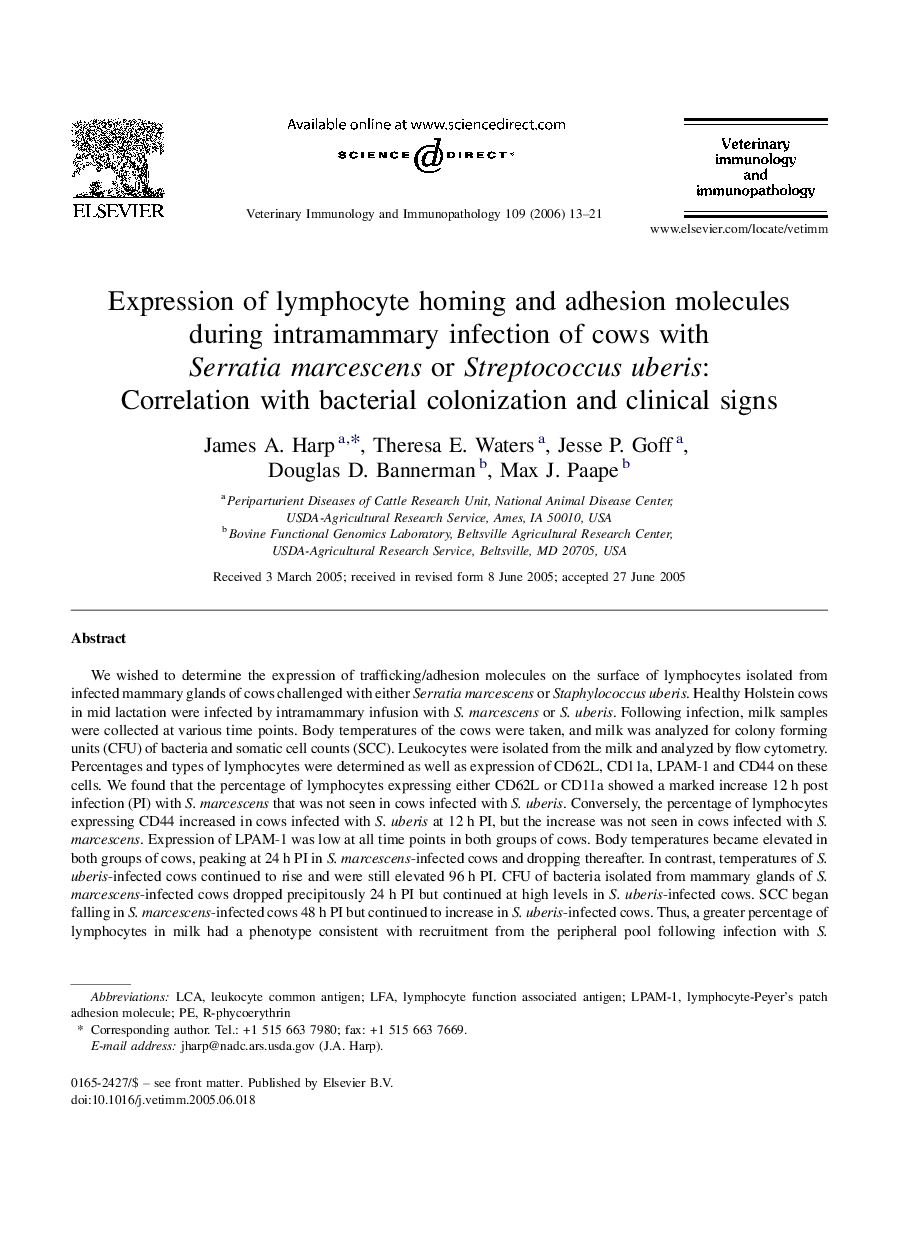| Article ID | Journal | Published Year | Pages | File Type |
|---|---|---|---|---|
| 2463598 | Veterinary Immunology and Immunopathology | 2006 | 9 Pages |
We wished to determine the expression of trafficking/adhesion molecules on the surface of lymphocytes isolated from infected mammary glands of cows challenged with either Serratia marcescens or Staphylococcus uberis. Healthy Holstein cows in mid lactation were infected by intramammary infusion with S. marcescens or S. uberis. Following infection, milk samples were collected at various time points. Body temperatures of the cows were taken, and milk was analyzed for colony forming units (CFU) of bacteria and somatic cell counts (SCC). Leukocytes were isolated from the milk and analyzed by flow cytometry. Percentages and types of lymphocytes were determined as well as expression of CD62L, CD11a, LPAM-1 and CD44 on these cells. We found that the percentage of lymphocytes expressing either CD62L or CD11a showed a marked increase 12 h post infection (PI) with S. marcescens that was not seen in cows infected with S. uberis. Conversely, the percentage of lymphocytes expressing CD44 increased in cows infected with S. uberis at 12 h PI, but the increase was not seen in cows infected with S. marcescens. Expression of LPAM-1 was low at all time points in both groups of cows. Body temperatures became elevated in both groups of cows, peaking at 24 h PI in S. marcescens-infected cows and dropping thereafter. In contrast, temperatures of S. uberis-infected cows continued to rise and were still elevated 96 h PI. CFU of bacteria isolated from mammary glands of S. marcescens-infected cows dropped precipitously 24 h PI but continued at high levels in S. uberis-infected cows. SCC began falling in S. marcescens-infected cows 48 h PI but continued to increase in S. uberis-infected cows. Thus, a greater percentage of lymphocytes in milk had a phenotype consistent with recruitment from the peripheral pool following infection with S. marcescens than was seen following infection with S. uberis. Concurrent with the increases seen in percentages of this lymphocyte phenotype, clinical signs lessened in the S. marcescens-infected cows.
